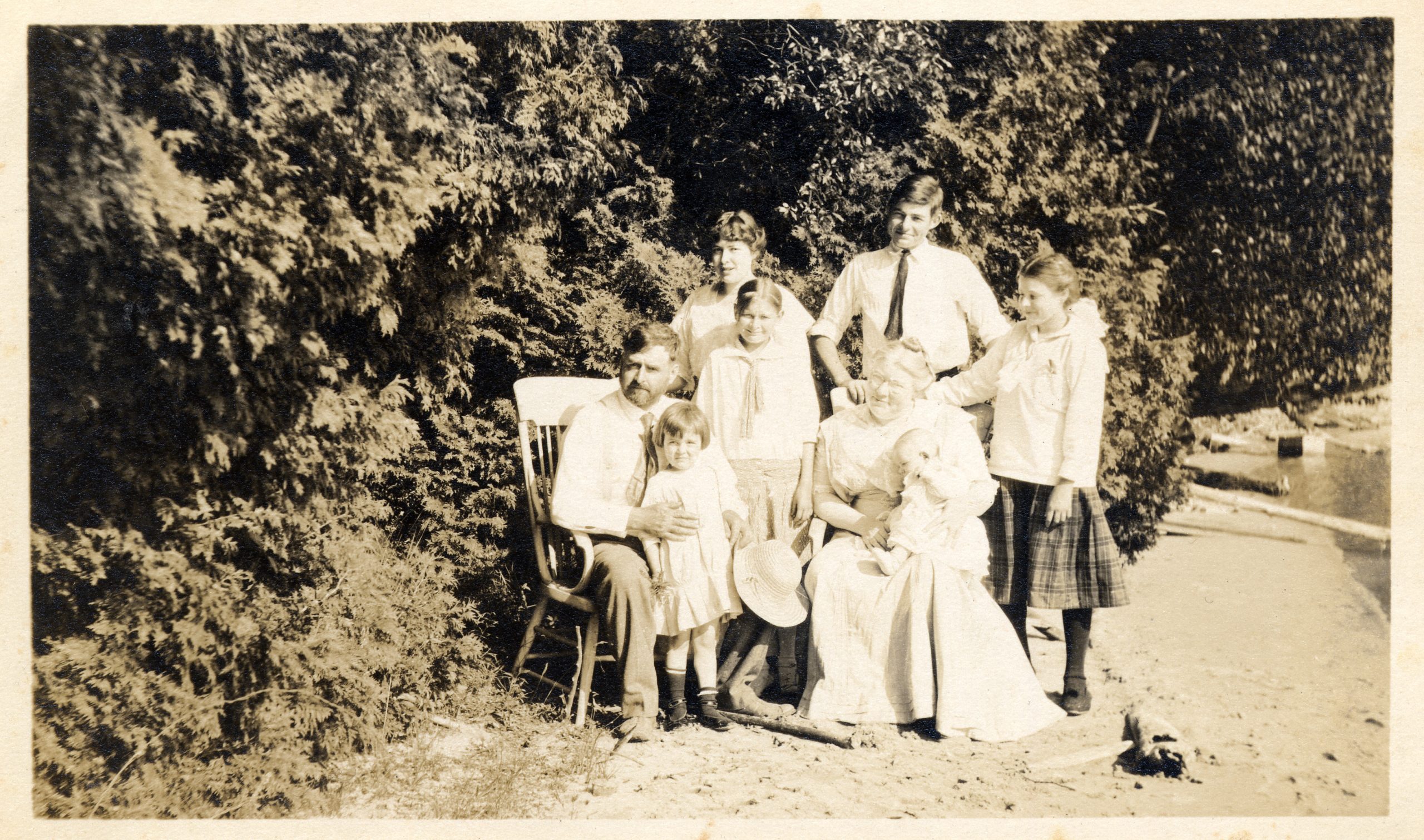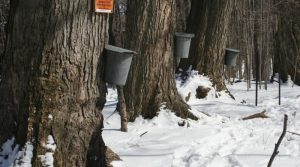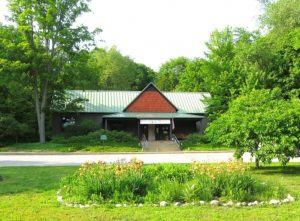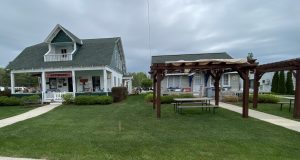While Ernest Hemingway is undoubtedly the most well-known Hemingway, there were powerhouse women who bear the famous surname.
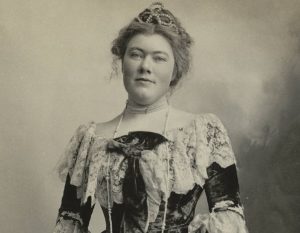
Grace Ernestine (Hall) Hemingway (June 15, 1872 – June 28, 1951). The daughter of Ernest Miller and Caroline (Hancock) Hall. She moved with her family to Oak Park, Illinois in 1886 where she attended Oak Park High School.
Grace was introduced to the performing arts early on, studying violin and piano and taking voice lessons. In fact, in the fall of 1895, she studied in New York City with Luiza Cappiani, a noted opera coach, and the following year debuted as a contralto with the Apollo-Club in Madison Square Garden. She was ultimately offered a contract by the Metropolitan Opera but weakened eyes from a childhood illness and a budding interest in a fellow classmate, Clarence Edmonds Hemingway, lead her back to Oak Park.
She and Clarence were married on October 1, 1896 and the couple would go on to have six children (four girls and two boys), and Grace would introduce each of them to the cultural arts. It is said that she even was the primary breadwinner in the Hemingway family, bringing in more income for her private music lessons than Clarence, who was a local doctor. The arts remained a vital part of Grace’s life and at the age of 52 (1924), she began attending classes at the Art Institute of Chicago and became a member of the Oak Park Art League, serving as its director for a number of years. It is believed that she painted over 600 pictures during her lifetime, a handful of which remain in the hands of descendants of the family.
Grace died in 1951, in Memphis, Tennessee, and is buried in Forest Home Cemetery in Forest Park, Illinois, alongside Clarence.
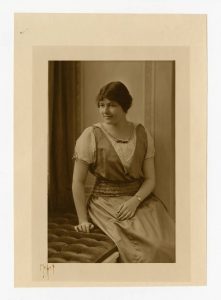
Marcelline (Hemingway) Sanford (January 15, 1898 – December 9, 1963). The oldest daughter of Grace (Hall) and Clarence Hemingway.
Born in Oak Park, Marcelline studied at Oberline Conservatory and became a social service worker. She trained at Northeaster University’s school of speech, which paved the path for her later years as a lecturer on literature and the theater. She penned a column called “Theatre Briefs” in the Magazine of the Women’s City Club between 1950 and 1963. She also wrote a memoir, At the Hemingways, which included stories from the family both in Oak Park, Illinois as well as their many summers spent on Walloon Lake, Michigan.
She married Sterling S. Sanford in 1923 and the couple lived in Grosse Pointe Michigan. They had three children: Carol Hemingway (Sanford) Coolidge (1923-2013); James Sterling Sanford (1929-2021) and John Edmonds Sanford (1930-2016).
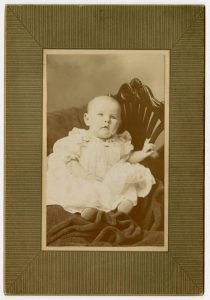
Ursula Xavier (Hemingway) Jepson (April 29, 1902 – October 30, 1966). The third child of Grace (Hall) and Clarence Hemingway.
A well-known artist – sculptor and ceramicist – Ursula lived in Minneapolis, Minnesota and later Honolulu, Hawaii. She was the wife of Jasper Jay Jepsen, a vice present and trust officer of the Bishop Trust Co., of Honolulu. The couple had one child, Gayle Hemingway (Jepson) Schnack.
After her brother’s death in 1961, she established the Ernest Hemingway Memorial award for creative writing at the University of Hawaii. Later, Jespen established the Ursula Hemingway Jepson Memorial Award for Creative Art at Carleton College in Minnesota. Both scholarships remain active to budding authors and artists, respectively.
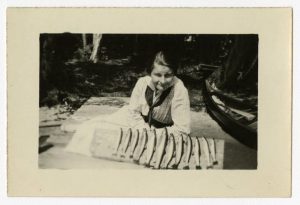
Madelaine “Sunny” (Hemingway) Miller (November 28, 1904 – January 14, 1995). The fourth child of Grace (Hall) and Clarence Hemingway.
Called “Sunny” by family (after a face on a box of cereal) and portrayed as “Littlest” in Ernest’s posthumously published 1972 title The Nick Adams Stories in honor of their very special bond.
Sunny was married to Kenneth Sinclair Mainland, and the couple had one son – Ernest Hemingway Mainland (1938-2021). Kenneth passed away in 1953 and three years later, Sunny married widower Ernest J. Miller.
She was trained as a nurse’s aid at West Suburban Hospital and later worked in a dentist’s office. Sunny was also a musician and formerly played the harp with the Memphis Symphony. In 1975, she published her memoir, Ernie: Hemingway’s Sister Remembers where she referred to helping her brother by typing pages to A Farewell to Arms.
The Hemingway family cottage, Windemere, was ultimately passed on to Sunny and today, her grandson owns this historic homesite.
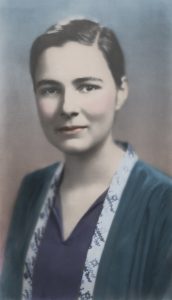
Carol (Hemingway) Gardner (July 19, 1911 – October 27, 2002). The youngest daughter (and fifth child) of Grace (Hall) and Clarence Hemingway and the only child to be born on Walloon Lake (just 2 days before Ernest’s 12th birthday).
After the death of Clarence in 1928, Ernest became Carol’s legal guardian and their relationship was so strong that she chose Rollins College in Winter Park, Florida in order be close to him at his Key West home. While at Rollins, Carol was vice president of her sophomore class and also contributed to The Flamingo, a literary magazine for the “youngest generation”. Ironically, she is the only sibling to not write a book about her famous brother.
It was there that she also met John “Jack” Fentress Gardner, a fellow student. The relationship drew the scrutiny of college officials, who believed the couple was living together and were ultimately suspended. With time on their hands, the two decided to vacation in Europe and upon their return, were married (a union that lasted for 65 years). Not all were happy with the marriage, however. Gardner and Ernest (likely both alpha males) did not get along and the rift drew a wedge between Ernest and his sister. They never spoke again after 1933.
In 1932, she and John Fentress were suspended from college because officials thought they were living together. They took leave to Europe and remarried upon their return, although they were denied readmission to the college. They couple was married for 65 years, lived in Massachusetts and had one daughter, Elizabeth (Gardner) Lombardi.
And let’s not forget about Ernest’s four wives (the Mrs. Ernest Hemingway ladies):
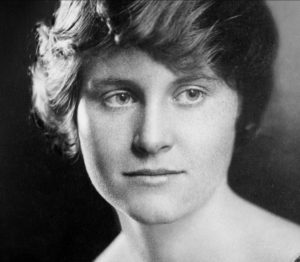
Elizabeth “Hadley” (Richardson) Hemingway (November 9, 1891 – January 22, 1979). Daughter of Florence (Wyman) and James Richardson, Jr.
Hadley and Ernest married on September 3, 1921 in Horton Bay, Michigan after a short courtship of less than a year. The couple moved to Paris and then Toronto, where their only child, John “Jack” Hadley Nicanor Hemingway was born. Jack later became the father of three daughters: Margaux, Mariel and Joan.
The Paris love story between Hadley and Ernest was the inspiration for the 1964 posthumously published book, A Moveable Feast, however the couple had divorced in 1927 after he was embroiled in an affair with Pauline Pfeiffer, who became his second wife.
Hadley later married Paul Scott Mowrer (1933-1971) and they lived in Paris and New Hampshire. After his death, she lived in Florida but was ultimately buried next to Paul in the Chocorua Cemetery in Carrol County, New Hampshire.
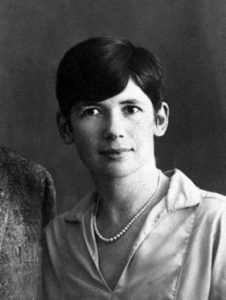
Pauline (Marie) Pfeiffer Hemingway (July 22, 1895 – October 1, 1951). The daughter of Mary Alice (Downey) and Paul Pfeiffer.
As a writer for Vogue, Pauline was living in Paris when she met Ernest and Hadley in 1926. She quickly became friends with the couple and joined them on their annual trip to Pamplona, which fueled the romantic fires between Pauline and Ernest. This eventually led to Ernest’s separation from Hadley and they were divorced in January 1927.
In May 1927, Ernest and Pauline were married and they had two children: Patrick (1928- ) and Gregory (1931-2001), who later transitioned to Gloria. The couple lived in Key West, in a stately home that remains open as an historic site and museum.
After 13 years of marriage, Ernest and Pauline divorced (November 4, 1940) after he had been in an affair with another writer, Martha Gelhorn (whom he married just three weeks later). Pauline died in Hollywood, California on October 1, 1951 at the age of 56 and is buried at Hollywood Forever cemetery.
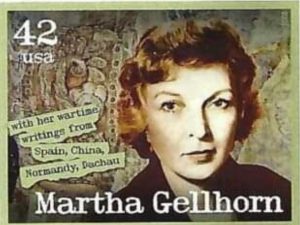
Martha “Marty” Ellis (Gellhorn) Hemingway (November 8, 1908 – February 15, 1998). The daughter of Edna (Fischel) and George Gellhorn).
Martha was on a family trip during Christmas 1936 when she first met Hemingway at his local hangout, Sloppy Joe’s. She was 28, he was 39. They were both instantly attracted to each other, and he thrived on the adoration she provided him (she had admired him as an author since her college days).
A fellow journalist, Martha had been wrote for Collier’s Weekly and was sent to cover the Spanish Civil War and as Ernest was also planning to cover the conflict, they traveled together. The two worked and traveled together often over the years, however the developed a competitive nature when it came to reporting. In many instances, Martha scooped Ernest, which bruised his ego (she was the only woman to land at Normandy on D-Day on June 6, 1944). The following year, the couple divorced.
Marty later married Tom Matthews in 1954 and moved to London. They divorced in 1963, but she stayed in England where she lived until her passing in 1998 at the age of 89.
She authored several books (both fiction and non-fiction) including Travels with Myself and Another (1979), The Face of War (1959), Point of No Return (1948) and A Stricken Field (1940), among many others.
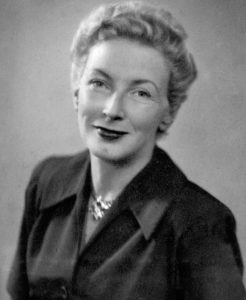
Mary (Welsh) Hemingway (April 5, 1908 – November 26, 1986). She was the daughter of Adeline (Beehler) and Thomas James Welsh.
She was raised in rural northern Minnesota (Cass County), graduated from Northwestern University in Evanston, Illinois and in 1932 was on staff of the Chicago Daily News.
In 1938, she married Lawrence Miller Cook. The union was short lived. She then moved to London to work and married Austrian journalist, Noel Monks. She met Ernest in 1944 and almost immediately the two enlisted in an extramarital affair (he was still married to Martha). The following year, Mary and Ernest divorced their respective spouses and they themselves were married in 1946 in Cuba. The couple had no children, but Mary did suffer an ectopic pregnancy in August 1946 which led to a miscarriage. The couple lived in Cuba at their home, the Finca Vigia and later had a home in Ketchum Idaho, where Ernest committed suicide on July 2, 1961.
Mary acted as literary executor to the Hemingway estate and was responsible for the publishing of A Moveable Feast, Islands in the Stream, The Garden of Eden and other posthumous works. She wrote her autobiography, How It was, in 1976. She later moved to New York City and died on November 26, 1986 at St. Luke’s Hospital. She is buried in Ketchum, next to Ernest.

